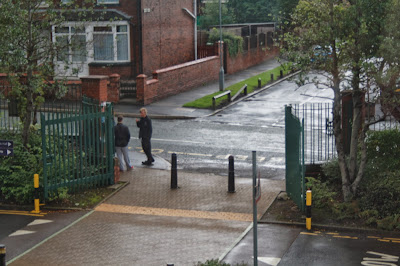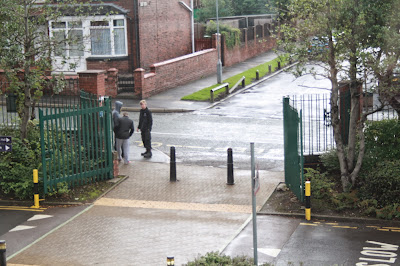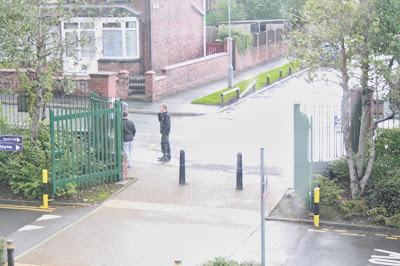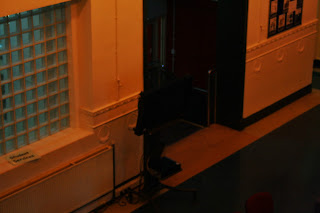For architecture we went out and took a picture of an old building and a more new/recent building, so I took a picture of an church for old and then the bus station for a new because that was the closet thing to new in Hyde.

This is the bell tower of a church and when I took this picture I stood under a tree so that there was a few leaves just over the lense and then I got the leaves out of focus so the bell tower was still visible and in focus.

This picture of the church was in a corner, so I took a picture of it looking up. The bricks look old making the church look distinguished, even though the building looks old, it still looks intact and looks like it is maintained well so that it can be used on a daily basis.
This image of a more up to date piece of architecture. For this picture i titled the camera so that it has a little tilt to it, also the sun is shinning through the glass pane windows and you can see that through the reflection on the ground.
Again this image is of more up to date architecture. This is the top roof of the bus station and I like how its looks and how the lights looks it looks like a circle and it fades at the top but gets brighter at the bottom.






















































